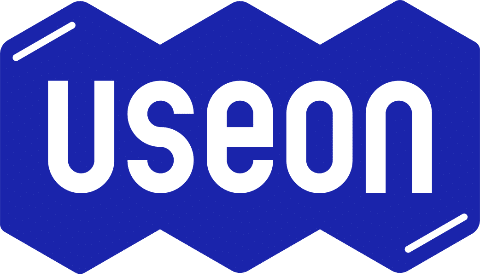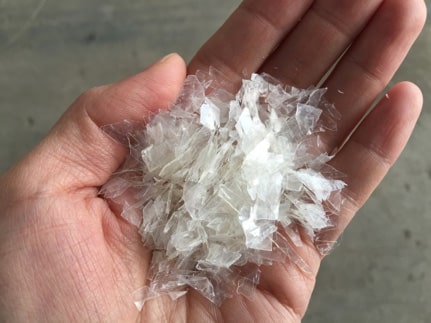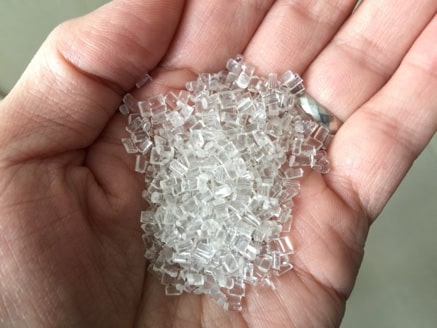Keeping the IV (intrinsic viscosity) drop as less as possible has been a challenge when recycle PET. Hydrolyzing and thermal degradation are the biggest potential harms for PET process. How to minimize these two negative effects becomes the critical know-how for PET recycling.
Traditionally, PET raw materials have to be pre-dried to remove the moisture before processing, which is energy-time-consuming process.
Our initiative employed high torque twin screw extruder to realize lower shearing and lower temperature extrusion process in order to minimize the negative effects from hydrolyzing and thermal degradation. Particularly designed vacuum system can help remove the moisture and low-molecular particles. As a result, the final pellets will carry higher quality with less energy consumption.
The kernel of this know-how is the cooperation between screw profile and vacuum system. When screw pushes the materials forward, it cannot be fully molten while passing the vacuum zone. If it is 100% molten, the hydrolyzing actually has happened. Even this hydrolyzing reaction is reversible under the vacuum environment, but the exposure time during the extrusion process is too short to make it happen. Therefore, the moisture has to be removed before it becomes molten.
Another enemy is thermal degradation. To make use as much mechanical energy as possible converting solid PET into molten condition instead of electrical heating is the best way to prevent thermal degradation from happening. That’s why we employed high torque twin screw extruder which can process PET at lower temperature than normal twin screw extruder.
Another advantage of using twin screw extruder to recycle is that all kinds of functional additives can be added during the process which is called inline compounding, such as color, anti-UV agent and chain extender etc.
To learn more about PET process, welcome to contact us.


